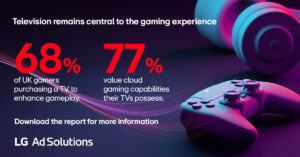by Darrick Li, VP, Business Development & Strategic Partnerships, North America, at Standard Media Index
For decades, advertisers have purchased ad spots on linear TV based on audience demographics. The ad spend for a channel, or show, was driven by the size of the viewership and the demographics of that audience. Did the audience skew male or female, young or old? What DMA tuned in the most? This long held practice is finally changing as TV undergoes an evolution in how buying is conducted. Instead of purchasing ad slots simply based on classic demographic breakdowns, the market is moving towards buys around specific psychographics and behavioral segments. Much like digital, advertisers utilizing this medium are now aiming for more granularly targeted impressions to achieve specific goals.
The benefit of audience targeting on TV
This evolution in audience targeting is a game changer for TV advertisers. For automotive brands–a category that already spends heavily on TV buys across sports and entertainment content–they can now reach key target audiences who are more likely to convert, such as affluent consumers or in-market automotive buyers. Of course, the CPM to reach granular audiences is higher. The relative CPM to reach high-income households can be as much as 4x the cost of regular US TV targeting. For in-market car buyer segments, the cost can vary widely for different models of cars, across networks, enabling a brand like Honda or Mercedes to understand where buys make sense for them and their budgets.
An impression from this audience, especially a segment that already has intent, is obviously worth more to these brands than a generic demographic audience impression. The question is how much more is a brand willing to pay to reach these granular audiences on TV and how much will the demand raise pricing? Better yet–how can the market fairly determine what pricing should be?
The need for pricing transparency
As audience based buying grows and the industry transitions to a more impressions-based currency, it’s essential for buyers and sellers to be armed with complete and accurate CPM-based pricing metrics for linear TV across all publishers, day-parts, programs and target audiences. There is a need for greater transparency into cost so advertisers can gain a holistic picture of the competitive marketplace to make effective ad buys– on TV but also across the media ecosystem.
It’s not enough to just compare pricing on linear TV. Brands need the ability to benchmark all channels on an apples-to-apples basis. The industry has been talking about cross-media measurement for far too long–it’s time to match actions with words to ensure the ecosystem is performing to the best of its ability– and this includes pricing transparency.
It is only with pricing transparency that we can create a fair ecosystem for everyone involved.








